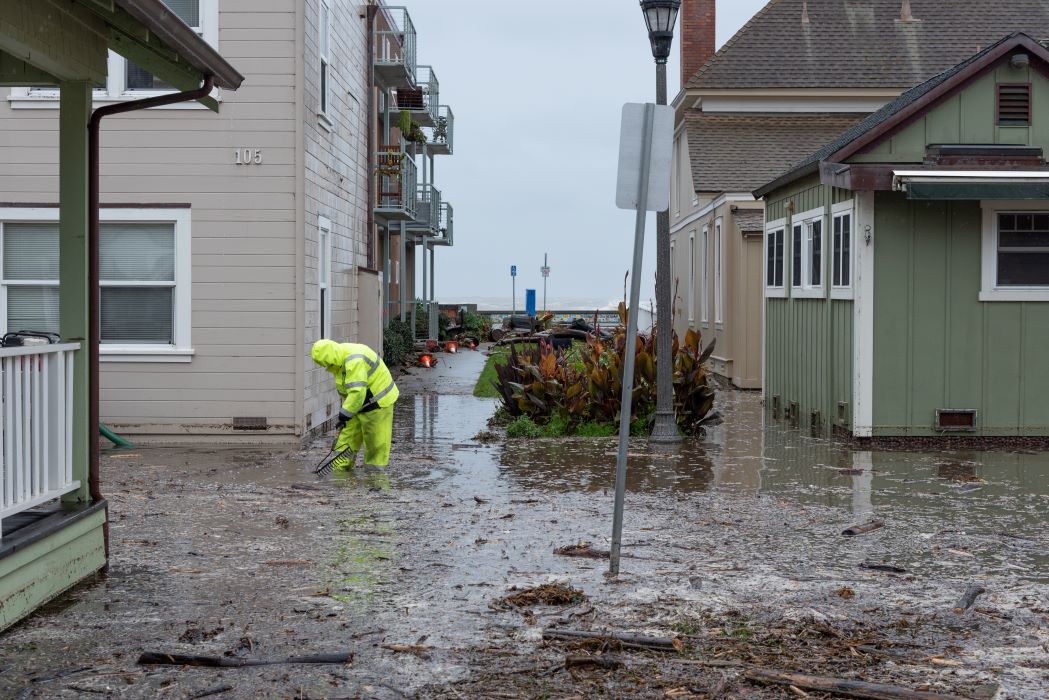Study reveals compounding risks of atmospheric river storms

A severe storm causes flood damage in Capitola, CA. Photo by studiorosa/Adobe Stock.
As relentless storms cause widespread flooding across California, a study led by researchers from Stanford University and co-authored by University of Florida geographer Katy Searafin sheds light on the driving force behind the torrential downpours: atmospheric rivers.
Analyzing 30 years of weather and economic loss data, the team discovered that when atmospheric rivers occur sequentially, the economic damage more than triples the expected losses compared to standalone events. These findings surpass initial expectations, showing the negative impacts of consecutive atmospheric river occurrences.
These elongated regions, often described as ‘rivers in the sky,’ are responsible for transporting a large portion of water vapor outside the tropics. Their strength varies, with the average river carrying water vapor roughly equivalent to the flow at the mouth of the Mississippi River. In extreme cases, they can transport up to 15 times that quantity. Upon landfall, they release moisture as rain or snow.
While atmospheric rivers contribute approximately half of California’s annual precipitation and replenish the state’s snowpack, they can also be associated with extreme events that lead to catastrophic damage.
The study, published Jan. 19 in Science Advances, highlights atmospheric rivers’ crucial role in providing up to half the region’s annual water while emphasizing the challenge of managing substantial water delivery in short time spans.